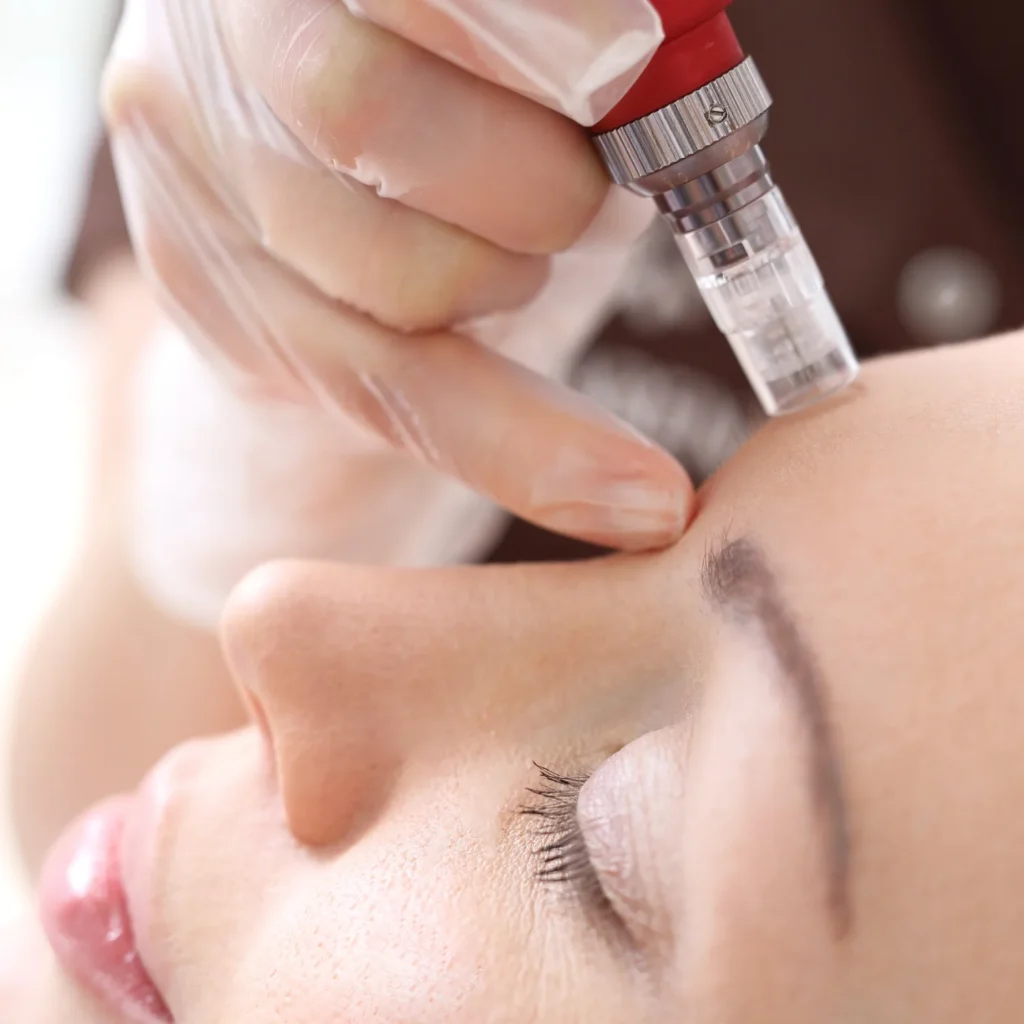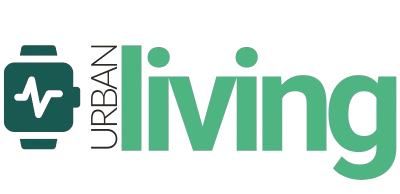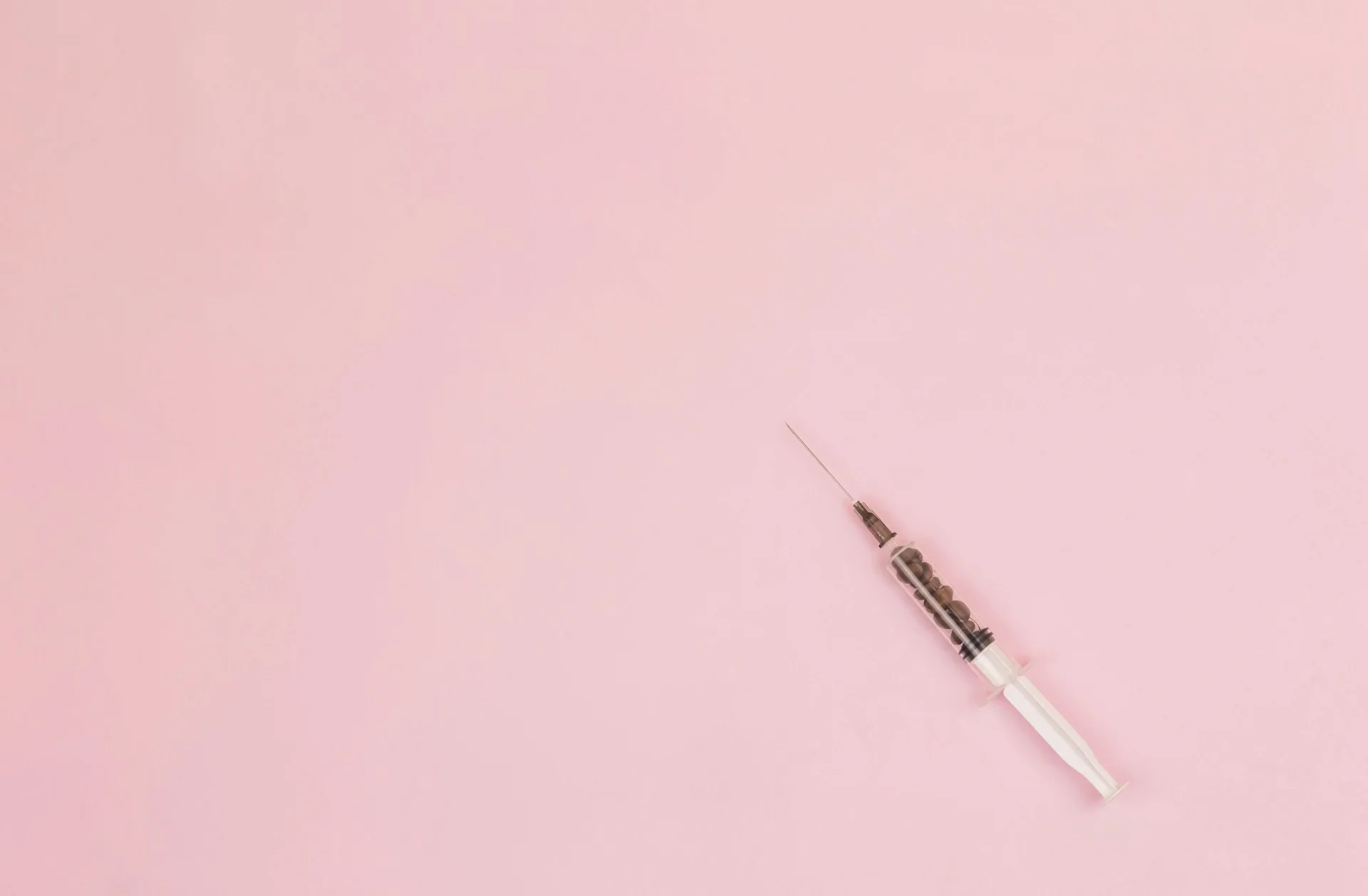Microneedling has become one of the most popular aesthetic treatments in Singapore in recent years.
With promises to address everything from acne scars to signs of aging, it’s no wonder that so many people are interested in this treatment. But what exactly is microneedling, how effective is it, and is it worth the hype?
This comprehensive guide explores the world of microneedling in Singapore to help you make an informed decision about whether this treatment is right for you.
What is Microneedling?
Microneedling, also known as collagen induction therapy, is a minimally invasive aesthetic procedure that involves creating controlled micro-injuries in the top layers of the skin using fine needles.
These tiny punctures stimulate the body’s natural healing response, triggering increased collagen and elastin production.
The treatment works on the principle that when the skin is injured in a controlled manner, it will repair itself by producing new collagen and elastin – the proteins responsible for skin’s strength, elasticity, and overall youthful appearance.
The micro-channels created also allow for better penetration of topical products, enhancing their effectiveness.
The Science Behind Microneedling
During a microneedling session, tiny sterilized micro needles on a handheld device prick your skin’s epidermis and dermis layers. This process:
- Creates controlled micro-injuries in the skin
- Breaks down existing collagen bundles (which can cause uneven scars)
- Triggers the release of growth factors
- Stimulates new collagen and elastin production
- Creates micro-channels that improve skincare product absorption
Collagen and elastin are the two most important proteins in skin tissue. Collagen provides strength and support, while elastin gives skin its elasticity.
Together, they maintain youthful, healthy skin.
As we age, production of these proteins naturally decreases, leading to wrinkles and sagging skin. Microneedling aims to kickstart their production again through controlled injury.
Types of Microneedling Treatments in Singapore

Traditional Microneedling
Traditional microneedling involves using a handheld device with small needles to create tiny punctures in the skin.
The depth and intensity of the needles can be adjusted to customize the treatment for each patient. This is microneedling at its most basic and does not incorporate any other type of medical treatment or technology.
Microneedling with RF (Radiofrequency)
Microneedling with radiofrequency (RF) combines traditional microneedling with the skin-tightening effects of RF energy. The needles used in this treatment deliver energy into the skin, heating it at different depths to stimulate collagen production. This results in smoother, firmer, and more youthful-looking skin.
RF microneedling can penetrate deeper into the skin (up to 3.5mm) compared to traditional microneedling, making it particularly effective for treating acne scars and providing skin tightening benefits.
Potenza RF Microneedling
Potenza RF microneedling is a specific brand of RF microneedling available in Singapore. It combines two RF waves—monopolar and bipolar at 1 and 2MHz frequencies—in a single device.
This treatment is FDA-approved and offers customizable options with different types of tips to address various skin concerns.
Microneedling with Serum Infusion
Advanced microneedling treatments can be combined with serum infusion to enhance results.
During these treatments, specialized serums containing ingredients like hyaluronic acid, peptides, or vitamin C are applied to the skin, where they can penetrate more deeply through the micro-channels created by the needles.
Benefits of Microneedling
When performed correctly, microneedling can offer various benefits for the skin:
- Reduces the appearance of acne scars and other types of scars
- Improves skin texture and tone
- Reduces fine lines and wrinkles
- Minimizes pore size
- Increases skin firmness and elasticity
- Reduces hyperpigmentation and sun damage
- Enhances the absorption of topical products
- Can be used on all skin types, including darker skin tones
- Can treat areas that may be difficult to address with other treatments
Read more: The Ultimate Guide to Acne Treatments in Singapore
Effectiveness of Microneedling
The effectiveness of microneedling varies depending on several factors, including the specific concerns being addressed, the type of microneedling performed, and individual skin characteristics.
According to some studies posted on the National Library of Medicine, patients experience noticeable improvement after a series of treatments:
- 51%-60% improvement in scar appearance
- 40%-50% improvement in skin texture
- 80%-85% overall satisfaction
For significant improvements, multiple sessions are typically required. Most practitioners recommend a series of 4-6 treatments spaced 2-4 weeks apart for optimal results.
It’s important to note that while some immediate improvements may be visible after each session due to increased blood flow and minor exfoliation, the most significant results develop gradually as collagen production increases over time.
Peak results typically emerge between 4-6 weeks after treatment, with continued improvement for up to 6 months.
Who is Suitable for Microneedling?
Microneedling can be an appropriate treatment option for many individuals, particularly:
- People with acne scars, surgical scars, or stretch marks
- Those experiencing early signs of aging (fine lines and wrinkles)
- Individuals with uneven skin texture or enlarged pores
- People with hyperpigmentation or sun damage
- Those with all skin types, including darker skin tones that may not be suitable for certain laser treatments
However, microneedling is not recommended for individuals who:
- Have active acne with inflammatory lesions
- Are on blood thinners
- Have diabetes
- Are immunosuppressed
- Have blood clotting disorders
- Are pregnant
- Have eczema or psoriasis in active flare-ups
The Microneedling Procedure: What to Expect
Before the Treatment
Before undergoing microneedling, you’ll typically have a consultation with a practitioner to discuss your skin concerns and determine if you’re a suitable candidate. They’ll explain the procedure, potential risks, and expected outcomes.
During the Treatment
- Cleansing: Your skin will be thoroughly cleansed to remove makeup, oil, and impurities.
- Numbing: A topical numbing cream may be applied to minimize discomfort during the procedure. This is usually left on for about 20-30 minutes.
- The procedure: The microneedling device is moved across the treatment area in a specific pattern. The practitioner may adjust the needle depth based on the area being treated and your specific concerns.
- Serum application: After microneedling, serums or other therapeutic products may be applied to take advantage of the enhanced absorption through the micro-channels.
The entire procedure typically takes about 45-60 minutes, depending on the size of the treatment area.
After the Treatment
Immediately after the procedure, your skin may appear red and feel warm, similar to a sunburn. This is normal and typically subsides within 24-48 hours. Some minor swelling or pinpoint bleeding may also occur but should resolve quickly.
Recovery and Aftercare
Recovery from microneedling is relatively quick compared to more invasive procedures. Here are some general aftercare guidelines:
- Avoid sun exposure: Protect your skin from the sun for at least a week after treatment. When going outside, use a broad-spectrum SPF 30+ sunscreen.
- Keep skin hydrated: Use gentle, hydrating products recommended by your practitioner.
- Avoid irritants: Stay away from products containing retinol, alpha-hydroxy acids, or other potentially irritating ingredients for a few days.
- Don’t wear makeup: Wait at least 24 hours before applying makeup to allow your skin to heal properly.
- Avoid strenuous exercise: Skip intense workouts that cause excessive sweating for 24-48 hours post-treatment.
Potential Side Effects and Risks
Although microneedling is generally considered safe when performed by trained professionals, there are potential side effects and risks to be aware of:
Common Side Effects
- Redness and inflammation (lasting 24-48 hours)
- Mild swelling
- Dryness and flaking during the healing process
- Sensitivity to touch
Less Common Risks
- Infection if the equipment is not properly sterilized or aftercare instructions aren’t followed
- Post-inflammatory hyperpigmentation (PIH) or hypopigmentation
- Bruising, especially if needles penetrate too deeply
- Prolonged sensitivity or irritation
- In rare cases, scarring (particularly for those prone to keloid formations)
Microneedling vs. Other Treatments
Microneedling vs. Laser Treatments
- Downtime: Microneedling typically has less downtime than ablative laser treatments
- Skin types: Microneedling is generally safer for all skin types, including darker skin tones that may be at risk of hyperpigmentation with certain laser treatments
- Target areas: Microneedling can be used on areas that may not be suitable for lasers, such as around the eyes and mouth
- Depth: RF microneedling can reach deeper layers of the skin (up to 3.5mm) compared to some lasers (typically around 1.8mm for CO2 lasers)
Microneedling vs. Chemical Peels
- Approach: Chemical peels remove layers of skin through chemical exfoliation, while microneedling creates controlled micro-injuries to stimulate collagen
- Customization: Microneedling depth can be adjusted for different areas of the face, offering more precise treatment
- Collagen production: Microneedling may stimulate more collagen production than superficial chemical peels
How Many Sessions Are Needed?
For optimal results, most practitioners recommend:
- Acne scars and deep wrinkles: 4-6 sessions
- Mild to moderate texture issues: 3-4 sessions
- General skin rejuvenation: 3 sessions
Sessions are typically spaced 2-4 weeks apart to allow the skin to heal and collagen production to progress between treatments. Maintenance sessions every 6-12 months may be recommended to sustain results.
Cost of Microneedling in Singapore
The cost of microneedling in Singapore varies depending on several factors, including:
- The type of microneedling (traditional vs. RF microneedling)
- The clinic or spa performing the treatment
- The practitioner’s expertise and credentials
- The size of the treatment area
- Any additional serums or treatments included
Generally, microneedling treatments in Singapore can range from:
- Traditional microneedling: $300-$600 per session
- RF microneedling: $600-$1,200+ per session
- Package deals: Many clinics offer discounted rates for multiple sessions purchased together
Is Microneedling Worth It?
Whether microneedling is worth the investment depends on your specific skin concerns, budget, and expectations. For many people, the benefits of improved skin texture, reduced scarring, and overall rejuvenation justify the cost and minimal downtime.
Microneedling may be particularly worthwhile if:
- You have acne scars or other textural issues that haven’t responded to topical treatments
- You’re looking for overall skin rejuvenation with minimal downtime
- You have darker skin and are concerned about hyperpigmentation risks associated with laser treatments
- You want to improve the absorption and efficacy of your skincare products
Where to Get Microneedling in Singapore
In Singapore, microneedling treatments are available at:
- Medical aesthetic clinics: These are typically supervised by doctors and may offer more advanced treatments like RF microneedling.
- Dermatology clinics: Dermatologists may recommend microneedling as part of a comprehensive treatment plan for specific skin conditions.
- Spas and beauty salons: Some offer traditional microneedling, though the regulation may be less stringent than in medical settings.
It’s important to note that the Ministry of Health in Singapore has guidelines regarding microneedling treatments. Medical clinics must abide by these guidelines, which classify microneedling as a procedure with a low level of evidence for efficacy. This means that doctors should only perform it if alternative treatments have failed and after informing patients about its limitations.
When choosing a provider, research their credentials, read reviews, view before and after photos of their patients (if available), and schedule a consultation to discuss your specific concerns and expectations.
FAQs About Microneedling in Singapore
Is microneedling painful?
Most patients report minimal discomfort during microneedling procedures, especially when a topical numbing cream is applied beforehand. You may feel a prickling or mild stinging sensation during the treatment. RF microneedling may cause slightly more discomfort due to the heat generated, but it remains tolerable for most people.
How long do microneedling results last?
Results from a single microneedling session typically last 4-6 weeks. However, a complete treatment course (usually 3-6 sessions) can provide improvements that last 6-12 months or longer. The longevity of results depends on your skin’s natural aging process, sun exposure, skincare routine, and lifestyle factors.
Can I do microneedling at home?
While at-home dermarollers and microneedling devices are available, they differ significantly from professional treatments in terms of needle quality, depth, and sterility. Home devices typically use shorter needles (0.25mm or less) and cannot provide the same results as professional treatments. They also carry higher risks of infection, irritation, or improper technique if not used correctly.
Is there any downtime after microneedling?
Most patients experience minimal downtime after microneedling. Skin redness typically subsides within 24-48 hours. You can generally resume your normal activities immediately, though you should avoid makeup for 24 hours and stay out of the sun for at least a week. Some people may experience mild swelling or sensitivity for a few days.
Can microneedling be combined with other treatments?
Yes, microneedling can be complementary to other treatments. It’s often combined with treatments like PRP (platelet-rich plasma), specific serums, LED light therapy, or certain laser treatments to enhance results. However, these combinations should be planned by experienced practitioners with appropriate timing between different procedures.
Is microneedling suitable for all skin types?
Yes, one of the advantages of microneedling is that it’s suitable for all skin types, including darker skin tones that may be at risk of hyperpigmentation with certain laser treatments. However, individual suitability should be assessed by a qualified practitioner based on your specific skin conditions and concerns.
How does microneedling compare to chemical peels for acne scars?
Both treatments can improve acne scars, but they work differently. Chemical peels remove layers of skin through chemical exfoliation, which can help with surface texture and pigmentation. Microneedling works by stimulating collagen production beneath the scars, potentially providing more structural improvement for depressed scars. For many patients with acne scarring, a combination approach may yield the best results.
Can microneedling help with stretch marks?
Yes, microneedling can help improve the appearance of stretch marks by stimulating collagen production in the affected areas. Multiple sessions are typically needed, and while it may not completely eliminate stretch marks, it can significantly reduce their visibility and improve skin texture.
How soon will I see results from microneedling?
Some patients notice an immediate “glow” after treatment due to increased blood circulation. However, the most significant improvements occur gradually as collagen production increases. You may start seeing noticeable improvements in skin texture and tone after 2-3 weeks, with continued improvement over the following months as collagen remodeling occurs.
Is microneedling safe during pregnancy?
Most practitioners advise against microneedling during pregnancy as a precautionary measure. While there’s no specific evidence that it’s harmful, any procedure that could potentially introduce infection or cause skin inflammation is generally avoided during pregnancy. It’s best to wait until after giving birth and, if breastfeeding, consult with your doctor.
Conclusion
Microneedling has emerged as a popular treatment option in Singapore for those seeking to improve skin texture, reduce scarring, and address signs of aging with minimal downtime. While not a miracle solution for all skin concerns, properly administered microneedling treatments, particularly advanced options like RF microneedling, can provide significant improvements when part of a comprehensive skincare approach.
As with any aesthetic procedure, the key to successful outcomes lies in choosing qualified practitioners, understanding the realistic expectations of the treatment, and following proper aftercare protocols. By considering the information provided in this guide, you can make an informed decision about whether microneedling is the right choice for your skin concerns.

